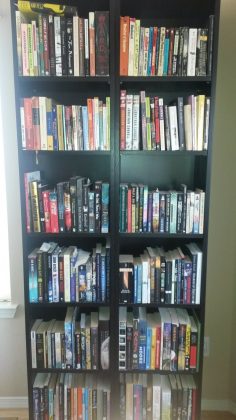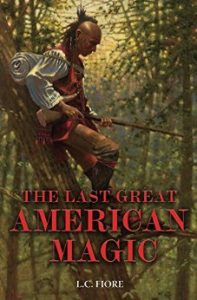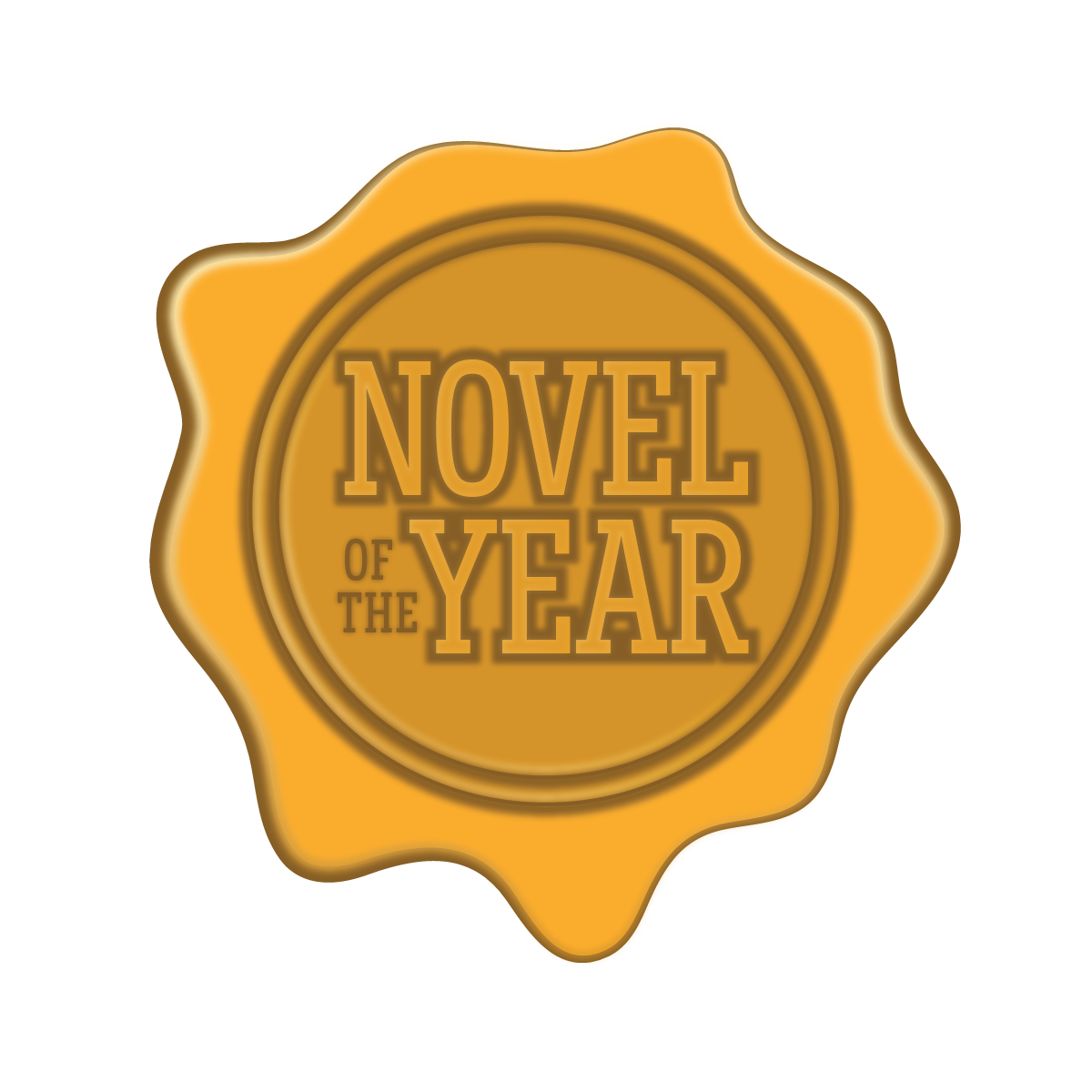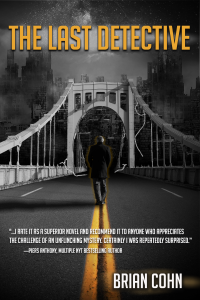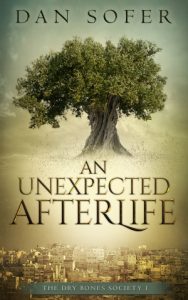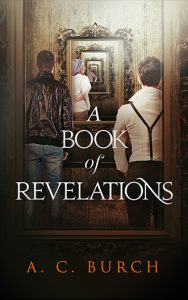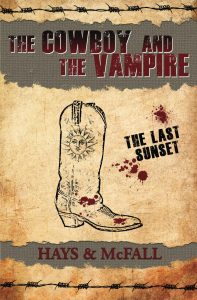The Rundown
The Recommendation
The Rating
The Links
The Reviewer
Bill Kieffer
Visit Bill Kieffer‘s website.You know how Talpa, the Underground Book Review Mascot, is a lovely little Mole, right?
Well, I'm sure I've mentioned this everywhere but here, but I happen to be a Rough Draft Horse elsewhere on the Internet. In fact, I'm largely known as Greyflank The Typing Horse. You've probably never heard of me and that's OK.
*sniffle*
I only bring it up to explain the heart-wrenching tale of woe that is the day that I came upon World Weaver Press for the first time. You see, I am a freelance equine writer and short stories are my forte. So, I am constantly on the look out for markets that inspire me to yoke up and trample the keyboards until it surrenders and delivers a manuscript. Despite all the violence, it's an incredibly slow process.
Horses inspire me, as you might imagine, so I was ecstatic to trip over an ice blue and silver banner with the close up of a horse's muzzle announcing that World Weaver Press was looking for submissions of SF/F about anything equine for their upcoming anthology, Equus.
There was just one problem: The deadline was November 30, 2016. I discovered this the day before Thanksgiving. 2016. Horror Tree loves to taunt me. I tried trampling my writer's program but it wouldn't even give up so much as a title.
I have an interview with the editor of chief at World Weaver; so I'll just have to be satisfied with that for now. And silently hope for Equus II sometime in the future.
Sarena Ulibarri On Her Bookshelves:
I’ve read all but about four of these shelves, and there are at least nine other bookcases in the house. Some of those TBR books I’ve been carrying around since college—which is no small feat considering how many times I’ve moved. Some part of me still believes that someday I’ll get around to them, and meanwhile I just keep adding more. One of the top shelves has books by some of my writing teachers, such as Catherynne M. Valente, Kij Johnson, and Stephen Graham Jones. One of the bottom shelves has several books by people in my critique group (or who used to be in it), though that’s not as complete as it should be.
There’s a section of Kurt Vonnegut paperbacks, and a section of Jonathon Carroll books, because those are two authors I collected and was very into for a while. I put all my Lightspeed “Destroy” anthologies together, even though my puppy literally destroyed one of them. Beyond that, no, there’s no logical organization at all. My husband’s shelves are immensely more organized, all Penguin histories and Conan the Barbarian paperbacks and D&D manuals, probably all alphabetized or color-coded. The fact that mine are on shelves at all instead of in big dusty piles is an accomplishment for me.
World Weaver Press: Indy publisher based in Albuquerque, New Mexico
Please describe World Weaver Press briefly and what genre(s) you serve.
World Weaver Press is an independently owned and operated publisher of fantasy, paranormal, and science fiction, currently based in Albuquerque, New Mexico. We publish many short story anthologies, but we also publish novels and novellas.
How did you come to found World Weaver Press? What titles and writers did you start with?
The company was actually founded in 2012 by Eileen Wiedbrauk and Elizabeth Wagner, both of whom have now moved on to other things—I took over in 2016. Our first title was a fun ebook-only story collection by Susan Abel Sullivan called Cursed: Wickedly Fun Stories, featuring some of Susan’s short stories from Andromeda Spaceways Inflight Magazine, Beyond Centauri, and other magazines. We later published two of Susan Abel Sullivan’s paranormal mystery novels: The Haunted Housewives of Allister, Alabama, and The Weredog Whisperer. Our first novel was Shards of History by Rebecca Roland, a unique fantasy about a matriarchal tribe in a protected valley who have to work with the creatures they think are their enemies in order to defeat a much worse colonial enemy. We published the third in Roland’s trilogy in 2017.
Do you have a staff? Can you introduce us?
I have an absolutely amazing staff, and they are the ones who really keep this show running.
Rhonda Parrish started with us as an anthologist and has transitioned into the role of assistant editor. Rhonda Parrish’s Magical Menageries anthology series wrapped up this summer with Equus, but we have a new anthology series in the works. Rhonda edits anthologies for several other publishers as well, and is also a writer whose work has been included or is forthcoming in dozens of publications including Tesseracts 17: Speculating Canada from Coast to Coast, Imaginarium: The Best Canadian Speculative Writing (2012 & 2015), and Mythic Delirium.
Trysh Thompson is an assistant editor with a specialty in all things snarky, funny, and romantic. In addition to being the editorial force behind Sara Dobie Bauer’s Bite Somebody duology, Trysh edited the anthology of geek romance, Covalent Bonds, and the anthology of magic spells gone wrong, SonofaWitch! Trysh is a technical writer by day and by night, she’s a superhero who goes by the name “Mom.”
Laura Harvey is the fierce editorial powerhouse behind A.E. Decker’s Moonfall Mayhem series and Cheryl Low’s Crowns & Ash series, and she fully earns her nickname of Mistress of the Red Pen. Laura is an editor, writer, bibliophile, horsewoman, historian, teacher, debate coach, nerd, DIY junkie, and occasional rescuer of kittens. She holds a BA, MA, and is ABD, making her an exceptional asset in Trivial Pursuit.
Cori Vidae is our specialist in the steamier side of paranormal romance. She edited The Naughty List, a holiday romance anthology featuring writers like Tiffany Reisz and Wendy Sparrow, and we’ve published several of her stories in other anthologies such as Demons, Imps, and Incubi and Covalent Bonds. Cori also runs Pen & Kink Publishing.
Kate Wolford is a fairy tale specialist who has been an anthologist with World Weaver Press since 2013. Her book of fairy tale annotations Beyond the Glass Slipper: Ten Neglected Fairy Tales to Fall in Love With was an Amazon bestseller in the folklore category, and her anthology of Christmas Krampus stories, Krampusnacht is always immensely popular around the holidays. Kate runs Enchanted Conversation: A Fairy Tale Magazine.
Kristen Bates started with us as an intern in 2016, and moved up to be our publicist in 2016. She’s our liaison with reviewers and bloggers, and our social media expert. Kristen is a recent college graduate who loves to read and write. Star Wars is her primary obsession but she loves all things science fiction, fantasy, and speculative fiction.
As a small indie publisher, I expect your company and your home may be somewhat juxtaposed. How much of your place has been given over to publishing? Is it fairer to say that World Weaver Press allows you to have a cot in the break room? Or, perhaps, there’s a clear separation between the two?
My office is smack in the middle of my house in a sunny nook between the kitchen and the living room. I don’t even have a door. It’s nice to work from home because I can stay in my pajamas all day and play with my dogs. It’s not so great to work from home because it’s difficult to separate work from life, and because I don’t have a way to close out the noise if there’s anything else going on in the house.

Tales of Yourself
Tell us a bit about yourself before you put on your publisher hat. Where were you raised? How did you relate to others from your age group?
I was a happy little kid in the Colorado mountains, pretending to be a unicorn and writing ghost stories in spiral notebooks, and then I was a morose, gothy teenager in Oklahoma, smoking too much pot and writing vampire stories on a Windows XP computer. I married my college sweetheart, and spent several years as an Army wife and yoga teacher, then went to the MFA program at the University of Colorado, Boulder, where I learned that being an English teacher was probably not my dream job. I think I’ve always related better to fictional characters than to my peers.
What did you read before you even thought of publishing? How did becoming a publisher change your reading habits?
I was a hardcore “paper books are better” person before I was an editor. I bought my Kindle to read manuscripts so I wouldn’t have to read them on the computer, and now I actually prefer it. Ebooks are cheaper, easier to carry, and I tend to read them faster. These days, though, if I’m going to read something that’s not World Weaver Press-related, it’s likely going to be via audiobook. I listen while I drive and while I do domestic chores. As an English major and then an MFA candidate, I read a lot of the “classics” and the contemporary literary writers in school. Now, I read primarily science fiction and fantasy, which is what I’ve always enjoyed most, and I have a much better idea of what’s been published recently, rather than only the old standbys I knew before.
If you meet someone for the first time and they introduce themselves as a writer, do you... a) say “Hey, funny coincidence...” b) talk about your “day job” exclusively... or c) point to a grouse in the trees and run away when their back is turned?
My instinct is often C, to be honest, but no, I’m always happy to meet new writers and talk shop. The problem is that everyone assumes I will be willing to publish them, and we’re such a small press with so many series in progress that I couldn’t even if I wanted to. We only open for submissions every now and then when we have a slot or two open (it’s never more than that), and we’re looking for very particular types of books in those submission windows.
For example, we’ll be open in September 2017 looking for paranormal romance, and that’s because one particular editor needs a new project, and that’s what she wants. I will often shift the focus to whatever anthology we have open or opening soon, encouraging writers to submit a short story for that instead. We want to be writer-friendly, but if we’re going to finish out all these series we’ve committed to and honor the authors we already have, we have to be really picky about the new books we take on.
On Community Interaction: Readers/Fans
How do you interact with your readership? Do you have a forum? A newsletter? Pen-pals?
We’re very active on Twitter, slightly less active but present on Facebook, and people often find us through those, especially when we have anthology submission calls. We also have an email newsletter that’s been steadily growing, and we send our fairy tale-related news to the Fairy Tale Roundup newsletter. We’re always looking for new reviewers--a few times we’ve even reached out to readers who left great reviews of a book to offer them a free copy of the sequel.
What is the typical fan of World Weaver Press like? Do you even have a typical fan? Are your readers attracted to different authors (or imprints) differently? Or do your readers tend to be attracted to the whole she-bang?
I’m not sure if we have a typical fan of the company as a whole. Our niche tends to be fun and uplifting fantasy and science fiction, often (but not always) with a good dash of romance. Someone who loves Sara Dobie Bauer’s rom-com beach-read vampire books (Bite Somebody and Bite Somebody Else) will probably also love Margo Bond Collins’ snarky history-PhD-turned-vampire-hunter in Legally Undead, and maybe even Anna Kyle’s sexy wolf shapeshifters in Omega Rising, but they are not necessarily going to be the same people who will love the complex, lyrical fairy tale retellings of Kristina Wojtaszek’s Opal, or the futuristic political satire of Larry Hodges’ Campaign 2100: Game of Scorpions. I suppose our ideal reader would be someone who reads both fantasy and science fiction, both novels and short stories, and prefers books that leave you with a happy or hopeful ending, even if sometimes they devastate you along the way.
What conventions or conferences do you attend where you meet fans? Do you tend to appear on panels, or do you prefer to revert to a fan yourself?
I regularly attend Bubonicon in Albuquerque and MileHiCon in Denver, and for the last couple of years I’ve been a panelist. I’ll also be at the Imaginarium Convention in Louisville, Kentucky this year, along with assistant editor Trysh Thompson and author Sara Dobie Bauer. Rhonda Parrish always attends When Words Collide in Calgary, Alberta, and she’s hosted launch parties for many of her anthologies there. I hope to be able to have a World Weaver Press table at the 2018 WorldCon in San José, California, but we’ll see. We keep a list of which conferences and conventions our authors attend on our website.
I’ve been to the San Diego Comic Con several times as a fan, but I’m swapping that out this year with GenCon in Indianapolis. I love being on panels, but sometimes it’s nice to just get lost in the crowds.
On Community Interaction: Writers
How do you attract writers? Or do they tend to find you? From submission to publication to marketing, how closely to you tend to work with your creators?
We always post submission calls on social media, and on the submission sites like Duotrope, Submission Grindr, Horror Tree, etc. Because we’ve published so many anthologies, a lot of writers seem to watch us for new announcements. Occasionally, we’ll solicit writers we hope to work with—that’s how we ended up with poems by Jane Yolen in Corvidae, Scarecrow, and Equus. It was different in the beginning, but now we’re blessed with a plethora of submissions every time we open. We work very closely with the writers we publish. Even for the anthologies, we tend to do substantial edits and organize publicity opportunities such as guest blogs. With Equus, Rhonda Parrish organized an “Equus Fight” blog battle where the horses (or horse-like creatures) from each story were pitted against each other, the winners determined by a combination of comment votes and dice rolls. For the novels and novellas, authors stick with the same editor through all stages.
Even ebooks have to have covers. How much say do your creators have in selecting a cover artist? How much say in the layout and design?
Our usual process is to send the author a cover art questionnaire, asking them details about what their characters look like, what kind of images or symbols might work, what they definitely don’t want on it, etc., then either I or one of the designers we regularly work with creates mockups. Sometimes authors have a lot of opinions on these, sometimes not, and we try to honor their feedback as much as we can. Even if it’s not exactly what they wanted, we try to make sure the final cover is something everyone involved with the book is proud of.
However, with Vanity in Dust, author Cheryl Low asked if her friend could create the cover. She sent me a few examples she’d done and I said sure, give it a go. They did a full photo shoot with Cheryl’s husband as the model, and the final result was fantastic.
Do you have one perfect font for your books or do you work with the writer to find the best font for each book?
Our books all use Adobe Garamond Pro for the interior. It’s a clean, thin serif that looks professional and is easy to read. For cover art, each font is different, and once we use a font for a cover, we try not to use it again except for books in that series. I often spend hours searching through my massive font collection for just the right one, and show the author several possibilities when creating the cover.
On Marketing
Most indie authors understand that they must do some marketing of their book, once it’s published. If publishing was a pool and marketing was swimming, are you the doting parent that shows them a video, buys them water-wings, and eases them in? Or are you more the uncle that throws them into the deep end with a slap on the ass and a hearty “Sink or Swim!” shout?
Once the final manuscript has been turned in, it quickly becomes clear there’s a difference between being a writer and being an author. Some take better to the latter role than others. We won’t necessarily buy them water wings, but we’ll at least get into the pool with them. We haven’t always done the best with marketing, but since I’ve been in charge I’ve tried to give authors as much guidance as possible and point them toward opportunities. Unfortunately, because we lack the budget and the prestige of the bigger presses, many doors are closed, or just barely open. We focus on getting reviews, because the best way to create buzz is to get other people talking about the book.
Have you and yours won any awards or titles? What was that like?
None of our books have won any major awards, though Legally Undead was a finalist in the Daphne du Maurier Award for Excellence in Mystery/Suspense in 2015, which was very exciting. Holly Schofield’s story “Two Steps Forward” from the Scarecrow anthology was nominated for the Sunburst Award for Canadian Literature of the Fantastic in 2016. Beth Cato and C.S.E. Cooney were both 2015 Nebula Award nominees in the novella category—Beth published a story with us in the Fae anthology, and C.S.E. Cooney in the Corvidae anthology, so even though our books weren’t being nominated, it still felt like a bit of success for us. Many of our other anthology authors are award-winners, because we’ve had the privilege of publishing short works by people like Jane Yolen, Gregory Benford, and Angela Slatter. I’d love to get some more awards attention for our books in the future. It’s one of my big goals for the company.
On Community Interaction: Local Real World Stuff
What is your area like? What attracted you to it? Do you find it inspiring in any way?
In New Mexico, they put spicy green chile on everything. I mean everything. The traditional dishes like enchiladas, tacos, tamales, sure, but also on pizza, hamburgers, mac and cheese, apple pie, etc. Green Chile Ice Cream? I’m not even joking.
We have the world’s longest aerial tramway and the world’s largest hot air balloon festival; we have the world’s first nuclear test site and the world’s first spaceport. I see roadrunners on a daily basis, and no, none of them has ever beeped at me, but they can be mean as hell and we sometimes have to change our dog walk route if they suddenly pop out of a cactus or bush so there won’t be a bloody skirmish. Solar panels are super common, and there’s a big wind farm that blinks red lights on the horizon beyond the extinct volcanoes. New Mexico has both the second highest crime rate in the US and also the highest number of PhDs per capita. In the mountains to the north there are Buddhist monasteries and Sikh communes, as well as 17th century adobe churches and shrines built around wells of holy dirt. It’s mostly desert, yeah, and we get those scorching 100+ degree summer days, but we also get snow, and the winter nights can be bitter cold. If you go out into the country a little ways, you’ll see more stars than you can see almost anywhere else.
New Mexico is strange and unique. I love it.
Do you work with any local writers or know any? Does the area find its way into their work?
New Mexico has an oddly high number of science fiction and fantasy writers, including biggies like George RR Martin and Steven Gould, and everyone pretty much knows each other. I’m in a fantastic critique group with a combination of established writers such as S.M. Stirling and Victor Milan and up-and-comers like Lauren Teffeau and Emily Mah. The New Mexico landscape does sometimes seep into their fantasy worlds, often in unexpected ways. Only one of the World Weaver Press authors was in New Mexico, though she recently abandoned us: Rebecca Roland’s fantasy world in the Shards of History series was absolutely inspired by the landscape and culture here.
Business vs Passion, Publisher vs Creator
How often do you get the chance to write for other markets? Do you do so grudgingly, or do you prefer the change of pace?
I was a writer before I was a publisher, and I’ve had a few short stories published every year since 2011. I always have a stack of stories in various states of disarray, and at least a few in submission. Weirdbook http://weirdbook-magazine.com/will publish one of my stories this fall, a Lovecraftian secondary-world fantasy about an ambitious monk who realizes not all the vibrations they're chanting are for the good of the world. My solarpunk story “Riding in Place” about a woman and a humanoid robot bonding over stationary bikes on an asteroid mine was recently published in the anthology Biketopia: Feminist Bicycle Science Fiction Stories. I don’t get to write as often as I’d like to anymore, but I make sure to carve out time for my own writing, and for keeping up with the current markets and submission calls.
What’s your day publishing like? How many days or hours of publishing are you able to get in per week?
Every day is different, depending on what stage a project is at, and how much multiple projects overlap. Being Editor-in-Chief means I’m the project manager for all the books. I spend a lot of time planning publication and publicity schedules, then coordinating those details with the authors and editors. I do most of the formatting for both ebook and print, and some of the cover art design, I read the anthology shortlists and offer feedback, keep track of royalties owed, research reviewers, organize discounts and promotions, and various other details that help get the book from the author’s computer to your e-Reader or shelf. Unlike a lot of small press publishers, this is my primary day job, and I usually work about 30 hours per week.
That Damn Slush Pile
How often is your “open” period, and where do writers find your latest story needs? Do you announce on sites like Horror Tree or Submittable?
We do announce on those sites, and also on our blog and social media, and in some Call for Submissions Facebook groups. Our website lists our novel guidelines and submission window, as well as our open and upcoming anthologies. http://www.worldweaverpress.com/submit-anthologies.html This year we’re open for the month of September, looking specifically for speculative romance novels (which could mean paranormal, sci-fi romance, or fantasy romance). We also have a science fiction anthology open until November.
How do you read a full book submission? Almost every book is going to need some work. How much interaction and work are you willing to give on a new book? And how do you make that determination?
Each of our editors would answer this differently! Here’s a related anecdote, though: When Vanity in Dust was submitted to us, we knew it wasn’t quite ready to publish, though several of our editors were intrigued by it. But Laura Harvey recognized the potential in it, and worked with the author for nearly two years on massive rewrites to transform it into the book it became. We aren’t always willing to put in so much effort, but if the editor loves it and clearly sees the work that must be done to make it great, we will.
These days, the slush pile is probably mostly or all piles of pixels. Is there a point where you might print some out to see how the story looks on paper?
I won’t print it out, but I’ll transfer anything more than a few pages to my Kindle.
How do you dole out rejection letters? Do you ever say “maybe with revisions”?
Bite Somebody by Sara Dobie Bauer was a revise and resubmit. Editor Trysh Thompson asked for quite a substantial change: switching from a first person diary format to a third person narration. But Sara did it, we accepted it, and it’s turned out to be one of our most popular titles. We don’t send out revise and resubmits very often, and when we do, we really mean it. I sometimes Twitter-stalk the authors I’ve sent R&Rs to, and sigh longingly when I see they’re now working on some other project rather than the one that was so-close-but-not-quite-there.
On Current and Future Plans
What was 2016 like for you and World Weaver Press? What were some of the highlights for you?
2016 was a crazy year for us. I won’t reveal the whole story about how I ended up as editor-in-chief, but it happened very fast, and I had to learn a lot of new skills very quickly. We ended up with nine books for the year, plus a re-release of one more. One of the highlights was getting author blurbs from Terry Bisson and David Brin for Meg Pontecorvo’s sci-fi novella, Murder in the Generative Kitchen. We sent out those requests thinking they were long shots, but both of them read the book and said nice things about it. Another personal highlight was the fact that Rhonda Parrish decided to dedicate her anthology Sirens to me, which reassured me that I’d made at least a few right decisions during the crazy transition.
What are the plans for the immediate future? What books will be rolling off the presses shortly?
We have a Kickstarter running until September 14th for a very exciting project: an English translation of a Brazilian Solarpunk anthology. This is our first foray into translation, and it’s a bit of a strain on our small press budget. It will be worth it, though: solarpunk is a new(ish) subgenre of optimistic science fiction, and this Brazilian anthology was the first book to use the term. It features some big name Brazilian and Portuguese science fiction writers, such as Carlos Orsi, Antonio Luiz M. Costa, Roberta Spindler, and Gerson Lodi-Ribeiro. We’re also open for submissions for a brand new solarpunk anthology so we can continue to add more voices to this conversation.
Both of those solarpunk books will appear in 2018. Coming up sooner, we have SonofaWitch!, an anthology of humorous fantasy stories about magic spells gone wrong, and Mrs. Claus, an anthology of stories exploring the mystery of who Mrs. Claus is and what her role is on Christmas Eve. Then in 2018, we’ll start off with The Continuum, a time travel novella by Wendy Nikel, which jumps between 1912, 2012 and 2112, and Into the Moonless Night by A.E. Decker, the third in her Moonfall Mayhem series—while her first book parodied fairy tale tropes, and her second book parodied gothic tropes, this one takes on epic fantasy, simultaneously telling a compelling and exciting fantasy story while poking fun at the classics of the genre.
Do you have any long range plans in the works?
We’ll keep on keepin’ on. Between our in-progress series and our planned anthologies, I have a rough schedule charted all the way out to 2022.
World Weaver's Bog

